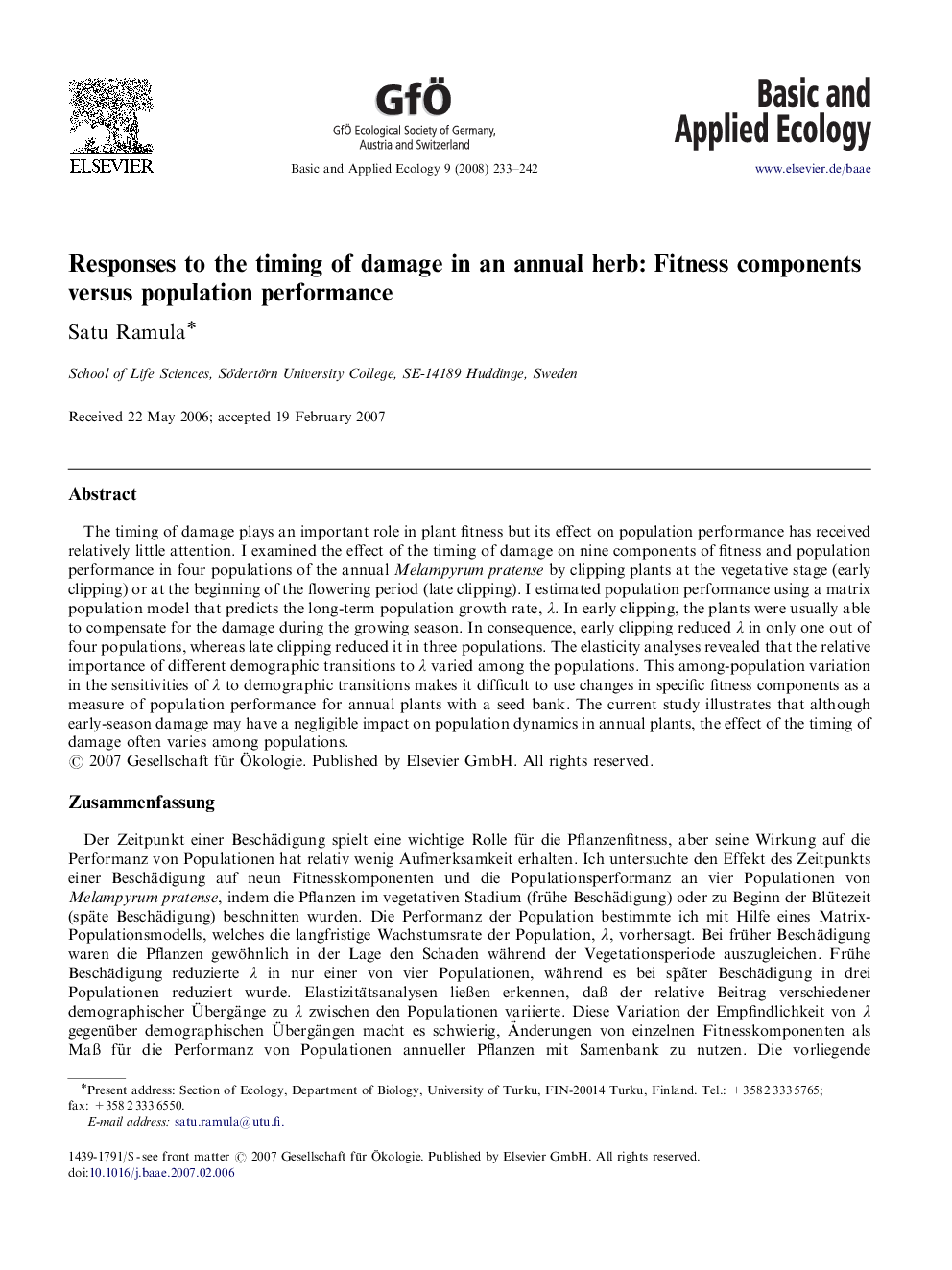| Article ID | Journal | Published Year | Pages | File Type |
|---|---|---|---|---|
| 4384921 | Basic and Applied Ecology | 2008 | 10 Pages |
The timing of damage plays an important role in plant fitness but its effect on population performance has received relatively little attention. I examined the effect of the timing of damage on nine components of fitness and population performance in four populations of the annual Melampyrum pratense by clipping plants at the vegetative stage (early clipping) or at the beginning of the flowering period (late clipping). I estimated population performance using a matrix population model that predicts the long-term population growth rate, λ. In early clipping, the plants were usually able to compensate for the damage during the growing season. In consequence, early clipping reduced λ in only one out of four populations, whereas late clipping reduced it in three populations. The elasticity analyses revealed that the relative importance of different demographic transitions to λ varied among the populations. This among-population variation in the sensitivities of λ to demographic transitions makes it difficult to use changes in specific fitness components as a measure of population performance for annual plants with a seed bank. The current study illustrates that although early-season damage may have a negligible impact on population dynamics in annual plants, the effect of the timing of damage often varies among populations.
ZusammenfassungDer Zeitpunkt einer Beschädigung spielt eine wichtige Rolle für die Pflanzenfitness, aber seine Wirkung auf die Performanz von Populationen hat relativ wenig Aufmerksamkeit erhalten. Ich untersuchte den Effekt des Zeitpunkts einer Beschädigung auf neun Fitnesskomponenten und die Populationsperformanz an vier Populationen von Melampyrum pratense, indem die Pflanzen im vegetativen Stadium (frühe Beschädigung) oder zu Beginn der Blütezeit (späte Beschädigung) beschnitten wurden. Die Performanz der Population bestimmte ich mit Hilfe eines Matrix-Populationsmodells, welches die langfristige Wachstumsrate der Population, λ, vorhersagt. Bei früher Beschädigung waren die Pflanzen gewöhnlich in der Lage den Schaden während der Vegetationsperiode auszugleichen. Frühe Beschädigung reduzierte λ in nur einer von vier Populationen, während es bei spãter Beschädigung in drei Populationen reduziert wurde. Elastizitätsanalysen ließen erkennen, daß der relative Beitrag verschiedener demographischer Übergänge zu λ zwischen den Populationen variierte. Diese Variation der Empfindlichkeit von λ gegenüber demographischen Übergängen macht es schwierig, Änderungen von einzelnen Fitnesskomponenten als Maß für die Performanz von Populationen annueller Pflanzen mit Samenbank zu nutzen. Die vorliegende Untersuchung zeigt, daß auch wenn frühe Beschädigung geringe Auswirkungen auf die Populationsdynamik von annuellen Pflanzen haben mag, der Effekt des Zeitpunkts einer Beschädigung oft zwischen den Populationen variiert.
